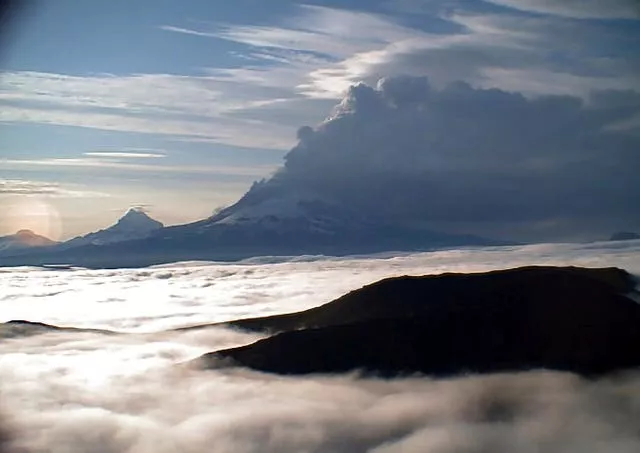An ongoing eruption of a remote volcano in Alaska’s Aleutian Islands produced an ash cloud so large on Tuesday that warnings were sent to pilots about potentially dangerous conditions.
The ash cloud with an initial height of around 5.5 miles was drifting south-southeast from Shishaldin Volcano, the Alaska Volcano Observatory said.
The eruption was described as moderate with ashfall drifting towards the Pacific Ocean, creating a potential concern for air traffic or boats, said Matt Loewen, a research geologist with the US Geological Survey at the observatory.
The volcano is about 700 miles south-west of Anchorage and sits near the middle of Unimak Island.

The island’s 65 or so residents live about 25 miles north-east of the volcano, in the community of False Pass.
Shishaldin Volcano began erupting on July 11.
A US coast guard overflight confirmed lava erupted the same day within the summit crater.
A significant explosion early on Friday produced an ash cloud that reached up to 7.5 miles and drifted south over the Pacific Ocean.
A second smaller explosion occurred later on Friday.
The volcano, one of the most active in the Aleutian arc, saw increased lava eruptions just after midnight on Tuesday, with no significant ash emissions, the observatory said.
That changed hours later with the ash cloud.
The National Weather Service issued an advisory due to the drifting ash cloud.

Volcanic ash is angular and sharp and has been used as an industrial abrasive.
The powdered rock can cause a jet engine to shut down.
Shishaldin is a symmetric cone with a base diameter of 10 miles, the observatory said.
The 660ft funnel-shaped crater often emits steam and an occasional amount of ash.
There have been at least 26 confirmed eruptions at Shishaldin Volcano since 1824.
Most are small, but the observatory said a 1999 eruption produced an ash cloud that reached 8.5 miles.







